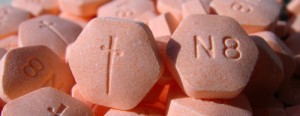 Debating whether addiction treatment should include buprenorphine is a complex issue. This week The New York Times printed an article called “Addiction Treatment with a Dark Side” that explored the history of buprenorphine and the dangers that it poses. This article sparked a debate with the HuffingtonPost and The New Republic both posting rebuke pieces, “New York Times Misses Mark on Buprenorphine” and “The Media Needs to Stop Stigmatizing Our Best Weapon Against Heroin Addiction,” respectively. So what is buprenorphine and what role should it have in addiction treatment?
Debating whether addiction treatment should include buprenorphine is a complex issue. This week The New York Times printed an article called “Addiction Treatment with a Dark Side” that explored the history of buprenorphine and the dangers that it poses. This article sparked a debate with the HuffingtonPost and The New Republic both posting rebuke pieces, “New York Times Misses Mark on Buprenorphine” and “The Media Needs to Stop Stigmatizing Our Best Weapon Against Heroin Addiction,” respectively. So what is buprenorphine and what role should it have in addiction treatment?
Buprenorphine (often sold on the market and prescribed as Suboxone) is an anti-craving drug, like Methadone, used as drug replacement therapy for heroin and painkiller addictions. Partially developed and promoted by federal officials, it has been hailed as a major tool in the fight against drugs. It has been deemed safer than Methadone and has allowed patients to take the medication at home (lessening the community stigma that surrounds Methadone clinic). It has played into the common belief that “replacing illegal drugs with legal ones, needles with pills or liquids and more dangerous opioids with safer ones reduces the harm to addicts and to society.” (NYT) But does this approach really free an addict from the chains of addiction? If not, what then is our goal as addiction specialists?


